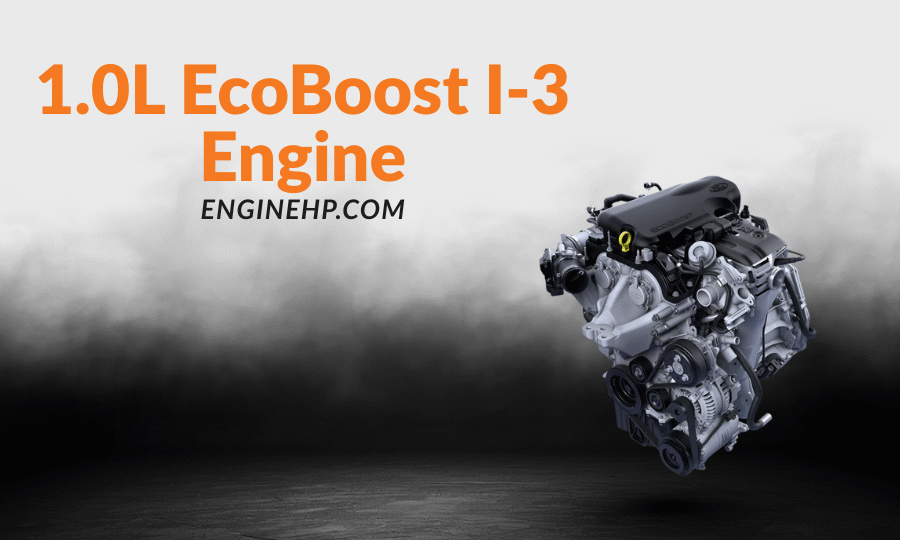
Ford Engines: 1.0L EcoBoost I-3 Engine Small But Mighty
The first impulse when you hear such technical characteristics as a 1.0-liter three-cylinder engine is as follows: Rolling along on this thing, it is impossible to feel power. The Ford 1.0L EcoBoost I-3 engine dispels that suspicion. Tiny, turbocharged and shockingly efficient, this small dynamo has transformed the thinking of manufactures and consumers about typical sizing approaches. This is a serious subject so shall we get into the nitty gritty of its design, performance and what it is that the buyer and the business should know.
The Origins of the 1.0L EcoBoost
In 2012, as the cost of fuel was increasing and there was more pressure to improve emission levels, Ford introduced the 1.0L EcoBoost I-3. Rather than making their cars bigger, Ford engineers made them smaller and smarter.
The vision of it was to have an engine that produced:
- Fuel economy like a hybrid: Saves on fuel consumption as a hybrid without hybrid battery additions
- Performance of a 1.6L engine: That of a 1.6L in a downsized package.
- Durability strong enough: Durability that will easily handle both long and short distance driving.
Within one year of release, the engine won the International Engine of the Year Award (2012, 2013, 2014) over the competition by BMW, Volkswagen and Toyota.
It is not only power that was recognized but innovation and usability in the real world.
Technical Overview of the 1.0L EcoBoost
To determine whether this engine is your right fit or fits your business, we are going to dig down into the most important technical information.
| Manufacturer | Cologne, Germany; |
| Craiova, Romania; | |
| Chongqing, China | |
| Production years | 2012-present |
| Cylinder block material | Cast Iron |
| Cylinder head material | Aluminum |
| Fuel type | Gasoline |
| Fuel system | Direct fuel injection |
| Configuration | Inline |
| Number of cylinders | 3 |
| Valves per cylinder | 4 |
| Valvetrain layout | DOHC |
| Bore, mm | 71.9 mm (2.83 in) |
| Stroke, mm | 82.0 mm (3.22 in) |
| Displacement, cc | 999 cc (61.0 cu in) |
| Type of internal combustion engine | Four-stroke, turbocharged |
| Compression Ratio | 10.0:1 |
| Power, hp | 100-125 hp (74-92 kW)/ 6,000 |
| Torque, lb ft | 130-150 lb-ft (170-200 Nm)/ 1,500-4,000 |
| Engine weight | 213 lbs (97 kg) |
| Firing order | 1-2-2003 |
| Engine oil capacity, liter | 4.1 |
| Engine oil weight | SAE 5W-20 |
| Oil recommendations and capacity may vary depending on the car model, year, and market. Please check the service manual specific to your vehicle! | |
| Oil change interval, mile | 9,000 (15,000 km) or 12 month |
| Cars with this engine | Ford Focus, Ford Fiesta, Ford EcoSport, Ford Mondeo, Ford C-Max, Ford B-Max, Ford Transit Courier |
This is a small and yet a capable package that has been behind everything between the Ford Fiesta hatchbacks to Focus sedans and even the SUVs as small as the EcoSport.
Advanced Engineering: Why It Works So Well
The 1.0L EcoBoost is not a small engine simply with a turbo. It is a highly designed unit that gets the best out of performance.
Key Innovations
- Integrated Exhaust Manifold – Shorter warm up time, contributing to a better cold-start efficiency and emission reduction.
- Offset Crankshaft -Lessens the side loads to the pistons, which improves fuel economy and lessens friction.
- Split Cooling System – Warm up cylinder block and head one at a time to be quicker.
- Timing belt in oil (BIO) -Low friction and noise, increasing service life.
Ford engineers were also able to overcome the vibration problems endemic in three-cylinder engines, though the new three-cylinder engines did not require the vibration-absorbing rubber gaskets that their predecessors needed. They instead came up with a pulley and unbalanced flywheel system that balances the shaking forces and produces a smooth and luxurious drive.
Such attentiveness to detail is also why the EcoBoost is much smoother than many smaller engines of years gone by.
Fuel Efficiency and Real-World Performance
In-the-lab figures are one thing, in actual driving another. The EcoBoost averages:
- City kilometres per gallon: 42-47
- Highway gas mileages: 52-56 mpg
- Cumulatively: ~50 mpg
This is what makes it suitable for commuters and fleet buyers. In comparison to earlier naturally-aspirated 1.6L petrol driven engines, drivers’ fuel savings in Europe come to be a whopping 400/-600 pounds annually.
In the case of businesses with 50 or more vehicles in their fleet, that is translated into tens of thousands of savings annually which can be considered a massive edge to competitive industries such as delivery, logistics, and ride-hailing services.
Why Businesses Pay Attention
To fleet buyers, taxi companies, and small business owners, the choice of the engine is not the question of the horsepower-it is the question of economy, dependability, and keeping true value per dollar spent. The EcoBoost has a lot going on in its favour
Reduced Cost of Fuel – Up to 20 percent improved fuel economy compared to older engines.
- Lower Fuel Bills: Vital to companies that operate in city-based low-emissions or low-emissions zones.
- Compact Size: It becomes easier to integrate with smaller vehicles at the cost of production and shipping.
- Global Availability: The parts are available widely across Europe, Asia and U.S.
An example of this minimized estimation is that European delivery businesses have documented downgraded up to 15 percent in running expenses of shifting their fleets to EcoBoost-powered automobiles.
The Driving Experience: Beyond Numbers
The figures do not always mean much. Get behind the wheel of the car with the 1.0L EcoBoost and you will see:
- Effortless low-end RPMs crusading.
- Amazingly sharp acceleration at the moment that turbo comes in.
- Quieter cabin experience: Agricultural banks are very similar to heavy boxes with a quieter cabin experience.
It is as though taking an espresso. Compact and fast, yet full of life energy- it bursts to life when you need it most.
Reliability and Maintenance
The big question every customer has is whether 1.0L EcoBoost is reliable?
Ford has spent massively on testing. As Ford Europe (2020) notes, the engine has been developed till the equivalent of 10 years of usage and 150,000 miles.
However, it is necessary to add that previous models (2012-2014) had a problem with cooling, which subsequently eliminated the Ford company.
Maintenance Tips
- Use only manufacturer recommended oil.
- To check the levels of coolants on a monthly basis
- Replace the spark plugs as recommended (about 30,000 miles).
- Because turbo whine is an indication of trouble ahead, it should be addressed promptly.
Taken care of, owners have reported these engines easily going over 120,000 miles with no significant problems.
Comparing with Competitors
With the competitors, the EcoBoost fares excellently in terms of size-to-power ratio.
- Versus Volkswagen 1.0 TSI: The same economy geared to a little bit more responsive torque in practice.
- Compared to Toyota hybrid systems: eco-boost costs less at purchase, but Toyotas are preferable in traffic-choked urban areas.
- Compared to the M40B16 Engine (BMW): The M40B16 Engine is bigger and performance oriented but the eco boost is more cost efficient in terms of running and efficiency in the city.
It makes the EcoBoost a nice place in the Neutral Zone between ordinary use and cost.
Who Should Buy It?
Not all buyers will consider this engine as an appropriate choice It is ideal with:
City-based drivers who require efficiency and excellent highway performance at some rare instances.
- Fleet managers that are interested in minimized operating costs
- First time buyers that want to sacrifice price and gain a little more performance.
- Eco-friendly motorists that want minimal CO 2 emissions but not quite ready to go full-electric.
On the one hand, one can haul heavy loads, as well as it is reasonable to prioritize raw performance, the larger engine, such as the M40B16 Engine or the EcoBoost 2.0L by Ford, would be a safe bet.
Real-Life Case Study
One of the leading couriers in London replaced its fleet of 1.6L engines by switching to charging 1.0L EcoBoost in 2018. In two years they reported:
- Fuel savings of 18% is realized.
- Pay less road taxes as the emissions are lower.
- Fewer interruptions on the services, now that the smaller engines were easier to maintain.
This is to demonstrate that modern compact engines allow business to attain both the environmental and financial benefits.
Global Impact of the EcoBoost
Since its introduction in 2012, more than 1.5 million 1.0L EcoBoost engines were sold by Ford throughout the world up until 2020. It is present in over 70 countries with its power used with hatchbacks, SUVs and others.
- In Europe, it is among the best selling small engines because of the stringent legislature on emissions.
- In Asia they will aid Ford in competing on lower cost markets.
- In the U.S: It is also deployed in the Fiesta and EcoSport in the U.S. where Americans are slowly warming up to smaller engines.
This international presence provides extensive avenues of parts supply- a key component to buyers and companies.
The Future of Small Turbo Engines
As the industry moves toward being electrified, where would a small three-cylinder engine play into that? Hybrids: Experts foresee that engines such as the 1.0L EcoBoost will remain in hybrid setups- with engines acting as range-extending powerhouses.
By 2030, several automakers plan to reduce emissions exponentially and the need to use small engines with hybrid support will not cease. Ford has already tried the combination of the 1.0L EcoBoost with mild-hybrid systems, which brings the increase in efficiency to another 10%.
Quick Pros and Cons
Pros:
- Good efficiency with pretty good power.
- Compact and light.
- Lower emissions and running costs.
- Design and innovation that is award winning.
Cons:
- Lowly towing capacity.
- Can feel heavy with lots of weight in it
- The latter must be carefully serviced to live a long life.
Conclusion: Big Value in a Small Package
The EcoBoost I-3 engine capacity is 1.0L, which proves that power does not all depend on size. This engine is a good option to consider by businesses that need to cut the expense and by drivers who want to have fun without compromising on the efficiency.
Although engine enthusiasts will no doubt favor the M40B16 Engine, the EcoBoost demonstrates that there can be a situation where less really is more.
Whether you are purchasing, selling or even dealing with fleets, this little power house is worth a good look-it may surprise you.
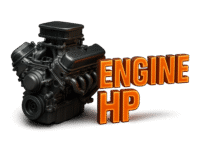

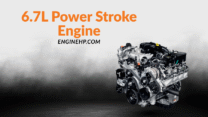
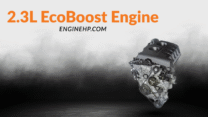
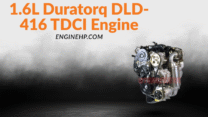
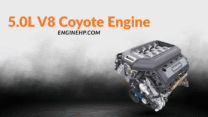
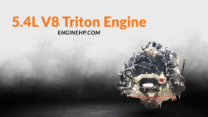
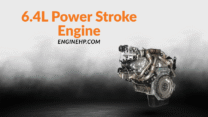
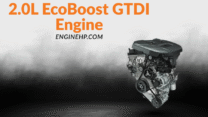
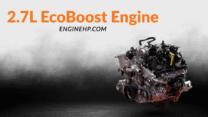
Leave a Reply